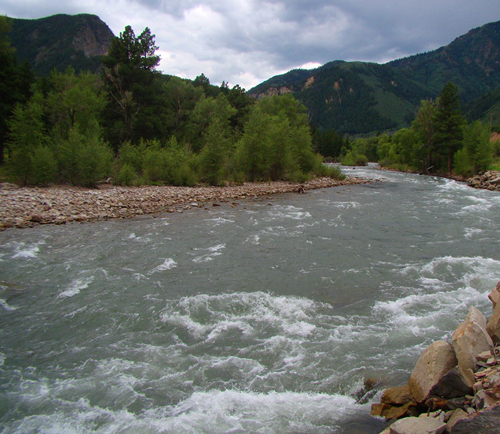Thursday, October 08 2020
Has Covid-19 put the kibosh on local haunted houses, trick-or-treating, and Halloween parties this year? Not to worry, you can still find some socially distant ghostly fun this season— visit a gold mining ghost town! About 3,800 ghost towns are still standing across the USA, mostly out West. Some of the buildings are in great condition, others are quite literally falling down. Some towns have become well-known, easy-to-reach roadside attractions, others are quite remote. Each town has its own boom-to-bust story that makes a visit both interesting and educational. Whether you’re a ghost hunter or a history buff, please leave everything as you find it. Take lots of photos, but no souvenirs.
Bodie State Historic Park, California. When a little girl writes in her diary “Goodbye God, I’m going to Bodie” you know her Oatman, Arizona. If you’re out to get some kicks on historic Route 66, stop in the ghost town of Oatman, Arizona. Born as a tent camp for gold miners in 1906, the town boomed, then busted in the 1940s, and has since come alive again. Over half a million tourists visit Oatman each year, greeted by friendly resident burros looking for a carrot snack! Although there are gift shops, staged gunfights, and costumed entertainers strolling the streets, Oatman takes pride in keeping the flavor of the town as authentic as possible. You won’t find newly renovated buildings here—Oatman’s historic buildings are definitely from a bygone era. As you stroll through town, watch for signs and painted murals. One particular interesting sign shares the history of the Oatman name. It was originally named Vivian, after the Vivian Mining Company. It was later renamed Oatman in honor of Olive Oatman, a woman kidnapped by Indians in the 1850s, and released five years later for a ransom of one horse, four blankets, and some beads. Signs also tell you that the town appeared in several movies such as How The West Was Won, Foxfire and Edge of Eternity. Bannack State Park, Montana. Although the old-time prospectors are long gone, many mining relics and over 60 buildings remain at Montana’s Bannack State Park. Most are so well preserved that you can actually go inside them— a rare treat when it comes to ghost gowns. Bannack’s rich history began 150 years ago with John White’s discovery of placer gold along the banks of Grasshopper Creek. In July 1862, Mr. White filed one of the first recorded mining claims in what was later to become the state of Montana. Good news traveled fast and by fall of that year, “Grasshoper Diggins” was home to 400 prospectors. By the following spring, the population had swelled to 3,000 — the Gold Rush was definitely on! On the southeast end of Bannack, the Bessette House is believed to be haunted by the children who died here during an epidemic of scarlet fever. The site is nicknamed the Crying Baby House because of the sounds some visitors have reported hearing. Keep the old timers in mind as you stroll through these or any other gold mining ghost town. It will give you a new appreciation for modern gold mining equipment and metal detectors that makes gold recovery so much quicker and easier. It really puts into perspective yesteryear’s impact on the gold mining we do today. Find more information on ghost towns, gold mine tours, and travel articles on historic sites here. Sunday, September 13 2020
The most basic piece of prospecting equipment is the gold pan. Size, color, and shape are really a matter of personal preference. Plastic pans generally come in green, black, and blue. The color doesn't effect performance, but green is the most common. Plastic is light weight, so when you add water, dirt, and gravel to your pan, your arms won't get as tired compared to using a steel pan. It's good to have a couple different sizes of gold pans on hand (10 inch, 12 inch, and 14 inch are the most popular). Saturday, August 01 2020
The maintenance fee for an existing lode claim, tunnel site, or mill site will increase to $165 on September 1, 2020. For placer mining claims only, the fees will be $165 for every 20 acres of land or portion thereof. Miners who file a Small Miner’s Waiver on or before September 1 will be required to file an Affidavit of Assessment Work Form on or before December 30, 2020, including the $15 processing fee per claim. Each payment must be accompanied by a written list of the claim names and BLM serial numbers for which the maintenance fee is being paid. You can find your state BLM office at www.blm.gov. Please note that new mining claims filed on or after September 1, 2020, will be subject to the new fee schedule. It's highly recommended that you send your documents by registered mail or hand deliver them while retaining copies for your records.
When you get to the claim search page, select the state where your claims are located and enter either the last name of the claimant, the claim serial number, or the lead serial number to search for your claim. Claimants who file on paper must include a document listing the claim/site name(s) and the BLM serial number(s) assigned to each claim for which the fees are being paid. Do not forget to file new claim forms or affidavits of assessment with your county recorder as well. Tuesday, June 23 2020
Ocean beaches can be compared to the Mother Lode. Why? Because you can find GOLD on many by mining with a highbanker, and by searching with a metal detector. How lucky is that?! TWO ways to find gold at the same location! Think about it, who hasn’t lost a ring or coins at the beach? Whether you prefer recovering gold by swinging a detector or shoveling into a high banker, your chances of both are higher by visiting a beach this summer that is located in a gold-bearing area. A side benefit is that you’re enjoying the nice weather while it lasts while mining the beaches in different ways. Beach Mining with a Highbanker When you consider the advantages of beach mining with a highbanker— easy access in all seasons, no classifying material down to size, no digging in heavy cobbles and moving boulders, no worries about rattlesnakes or poison oak— the idea is very appealing. Of course any new environment means there will be a learning curve. Recovering 100 mesh gold from the beach requires a little extra attention to detail to prevent loss, so you’ll need to readjust your equipment and process. Don’t expect chunky nuggets; you’re going for the flour gold here. High tide, not your watch, will dictate your schedule. The general principles you already know are the same, but also keep these tips in mind. • Slow down. Expect to process about 10 gallons of material an hour. If you try to feed a highbanker faster or use bigger scoops you will likely lose gold. The most efficient way to locate the paying black sand layers is to use a post hole digger or earth auger. The pay layer is usually right on top of a golden brown sand layer that pushes up into the black or blue sand. Frequent storms can remove the light sands and reconcentrate the black sands. • Use about 25% of the water you would normally use. You may need to modify your spray bar to compensate for less water volume so you aren’t fighting foam and bubbles. • The beach is a level playing field—literally, so tip your box to a 9-degree angle and go from there. Most beach miners use battery-powered bilge pumps to run their beach sluices. A small gas-powered pump also will work. A Gold Cube is also an excellent piece of recovery equipment to concentrate beach material, then run it through a Blue Bowl. • Do frequent clean-ups. Beach Mining with a Metal Detector Water and sunscreen have a sneaky way of slipping rings from fingers of swimmers and sunbathers, making beaches a lucrative location for metal detecting. There are actually several similarities between beach hunting for jewelry and hunting for gold in the rivers. At the beach, stuff that is lost in the upper sand areas make their way down into the surf during large storm events just like gold is washed downstream in the same storms. You can find an occasional nugget above a river in gold country, but you’re going to make your best finds when you locate the pay streak where nature has concentrated the gold. The same is true of the beaches. You will find that the surf sorts out materials, and when you are really lucky, you can identify a pay streak. In a river, the gold pay streaks follow the downstream flow of the river, but on the beach the pay streak will typically run horizontal across the beach. After items have been in the sand/surf for some time, the wave and current action tend to sort thing by weight and density. The pull tabs will be in a certain line, the lighter coins further down towards the deeper water, and when you start detecting fishing weights, you are likely nearing a pay streak. That is where you are most likely to strike gold— as in gold rings, bracelets, pendants, etc. Wet sandy areas are particularly lucrative for detectorists. The reason for this is that beach-goers first congregate at the "towel line" and then migrate to wet sand. The "towel line" is an invisible area where the majority of people plop down their towels and coolers and umbrellas. At the towel line, sunbathers slather on slippery sunblock and tanning oil that acts like a lubricant and lessens friction. After baking in the sun for a while, they will need to go into the water to cool off a bit, which is where the body's natural reaction to cold is to shrivel up. Less friction + shrinkage = rings in the wet sand you can find with your metal detector! In all types of beach hunting, the discrimination must be kept very low, eliminating only small iron (bobby pins and nails). Aluminum pull tabs and tin foil should not be discriminated or you will lose some gold and/or platinum rings as well. Some beach hunters operate with zero discrimination and dig everything. Use of a sand scoop makes target recovery fast and easy. It’s important to realize that most gold rings will read in the “middle” tones (above iron but below coins). If you’ve ever hunted the beach you have no doubt found your share of unwanted nails and other litter. To solve this, lace a rare earth magnet in the scoop to quickly capture those small, annoying iron targets. If you’re going to hunt the salt beach areas, you’ll want to get a heavy duty plastic scoop. A steel scoop will rust fairly quickly in those harsh conditions. If you intend to hunt IN the water, of course you will need a waterproof metal detector and waterproof headphones — one that can handle salt water mineralization. There are some good pulse induction machines that work extremely well in salt conditions. Very shallow water is no problem but when you hunt waist deep water and deeper you should consider a mask and snorkel. If possible, hunt at low tide. That way you can get further out and hunt where other detectorists might not have gone. Plus, the surf tends to pull things down the beach and out into deeper water.
Saturday, May 02 2020
Researching new areas in which to prospect for gold, gems, or whatever you are seeking can be a lot of work, but since we’re now
Tuesday, March 31 2020
Although “social distancing” has become part of everyone’s new normal, gold prospectors and metal detectorists have traditionally
Depending on our age and general health, some of us might already face a higher than average risk of having a serious medical issue no matter what we are doing or where we are doing it. Many people already deal with high blood pressure, diabetes, heart disease, arthritis, cancer, and more. Not that we can compare these more common maladies to the COVID-19 Pandemic, but the point is that many are already used to taking precautions and living with risks. Folks with existing health conditions have been taking the necessary self-care steps for years, especially when out in the field and far away from a city. How do you protect yourself and others and help flatten the curve until the pandemic is no more? If you want to continue to prospect on a claim, sluice on a waterway, swing a detector, and enjoy the great outdoors this spring and summer, consider these easy tips before you head out:
Of course, commonsense also tells us that if you feel symptomatic or think you may have been exposed, immediately follow the current COVID-19 health care guidelines. Otherwise, hopefully digging in the dirt will provide you with a level of normality that we would not otherwise have if we stayed at home listening to the news 24/7. Start planning your next prospecting trip and take advantage of the greatest social distancing project out there! One that has been around since the time man first found gold centuries ago. And what’s better is that social distancing by prospectors is not driven by fear, but by the excitement of getting out there and hunting for gold! Good luck and be safe! Tuesday, February 11 2020
The big gold rushes of the 19th century have long since ended, but in most cases you can still prospect for the precious metal in these Below is a very short list that offers a few ideas only. Beginners should search the internet or join a local gold prospecting organization for more information.
Keep in mind that even if there has been no major “rush,” major amounts of gold have been found in many other states, too, including Georgia, Michigan, Montana, New Mexico, Oregon, South Carolina, Tennessee, Texas, Utah, Virginia, Washington, Wisconsin, and Wyoming. Good luck! Thursday, January 30 2020
Anyone who prospects for gold knows how elusive it can be. Even when you’re for certain on “good ground,” you can end the day with not much to show for your efforts. On the other hand, you may have a really great day and recover some of the shiny stuff, only to return to the same spot at a later date and find nothing. Often, the amount of gold you recover changes when you use a different piece of equipment or a different accessory. Sometimes it’s the weather that exposes or releases gold after a flood or storm. The environment can change, but sometimes the positive difference can be new places to look for gold. Besides hiding in the usual places in streams and on dry land— in crevices, behind boulders, in the roots of plants and trees, in tailings piles — have you ever considered looking for gold in MOSS? Yes, the kind of ordinary moss that thrives in wet conditions! Mosses are small flowerless plants that usually grow in dense green clumps in shady moist places. That might be the forest floor, or on trees and rocks along the banks of a waterway. Moss is seedless and only grows roots shallow enough to attach itself to surfaces where it will thrive. Moss doesn’t have a root like a flower has, but it does have root-like structures that attach it to the host rock. These structures are known as rhizoids. Instead of sucking up moisture through the roots, moss collects rain and stream water that runs over top of them. It may also collect fine gold in the same way. If you’ve visited a particular stream at various times of the year, you know that water levels can vary greatly. Sometimes water completely covers mossy rocks that are along the banks, other times when the water level is low, the moss is exposed and dries out in the sun. Have you ever considered processing that ordinary moss for fine gold? It doesn’t sound too crazy when you think about gold being heavier than water and how it hides under boulders and rocks. So why couldn’t fine gold collect in moss as well? The next time you see moss growing along a gold-bearing waterway, try processing that moss (and all the dirt and sand and — hopefully — GOLD) that is mixed in with it. If you don’t have a convenient gold vacuum such as a Vac Pac, try scraping the moss into a bucket. Then break it up to release the dirt from the roots. Once you work the dirt and sand out of the moss, pan that material. Depending on the number of rocks located along any given waterway, you may find plenty of moss to work in addition to sluicing or panning in that river. Give it a try. You may just recover some of that elusive gold that would ordinarily gets overlooked by most prospectors. Good luck! Monday, January 20 2020
The 2020 GPAA Gold & Treasure Show circuit is planned to be better than ever this year! With $110,000 in prizes, several dozen vendors demonstrating equipment, informative Saturday show hours 10 am - 5 pm and Sundays 10 am - 4 pm in these cities: • Pomona, CA: February 15-16 Visit the GPAA website or their Facebook page for more details and to buy your advance $5 adult tickets; kids 12 and under plus military and veterans with ID are FREE. General admission at the door is $10. If you can, make a family road trip out of attending one or more of the shows this spring. In addition to the show itself, each city has fun touristy things to do, and if you're a GPAA member, you can prospect on nearby mining claims. Whether you’re a family with kids or a lone enthusiast, a GPAA Gold & Treasure Show is your one-stop-shop for all of your gold prospecting and treasure hunting wants and needs. By attending a show, you're sure to have a blast, meet interesting people, find new tools, and learn new tricks of the trade. All of that is enough to make you hollar Eureka! Monday, December 23 2019
Did you know that “bad” weather can be a plus for prospectors? No one ever hopes that Mother Nature causes catastrophic loss of life and property, but the ups and downs of weather events in any gold-bearing area are something to take advantage of. Nature can help all of us in our quest for the shiny stuff! Typical winter storms usually do not create enough havoc to force substantial amounts of "new" gold into movement. However, when Mother Nature really goes to work over a “bad” winter or for an extended period of time, a great deal of gold can be set free, creating a bonanza for gold hunters in spring and summer. Gold veins that have been hidden for decades suddenly can be exposed. Floods can also sweep gold out of abandoned mines and wash it downriver. Known gold digs can be washed out, trees uprooted, and the landscape eroded. Benched gold deposits can be released and transported back into running streams. If you’re in an area that experiences high-water events, get out and keep an eye on the water flow so you can try to figure out where the gold actually drops out. Watch the flow lines around boulders and trees. Watch where the flows slow down. The rule of thumb — gold is in the inside bend where water is slowest — is a rule of thumb, but not always 100% accurate. On the flip side, if drought conditions prevailed last fall and continue this winter, adequate water levels needed for panning and sluicing may be difficult to find. By knowing this ahead of time, you won’t waste your time. You can plan to travel to better areas in the coming months. Water isn’t the only force that can work in a treasure hunter’s favor. If you are a detectorist, keep an eye on the wind. Downslope winds can strip and scrub away a great deal of surface material. This wind-driven movement of top sands can make an exciting difference— areas that came up empty just last year may suddenly be productive for a metal detector! Whether you’re in the midwest, southeast, or way out west, water table elevations and annual precipitation can have a significant impact on the amount of gold exposed in waterways, which can affect the probability of what you’ll find in your pan. Greater than average winter precipitation may swell waterways, liberating trace gold previously stranded in ground by droughts of late summer and early autumn. Good luck and be safe! |
|
Nugget of News Blog |






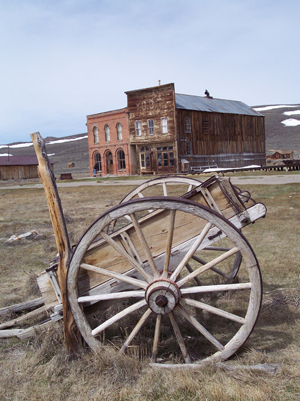
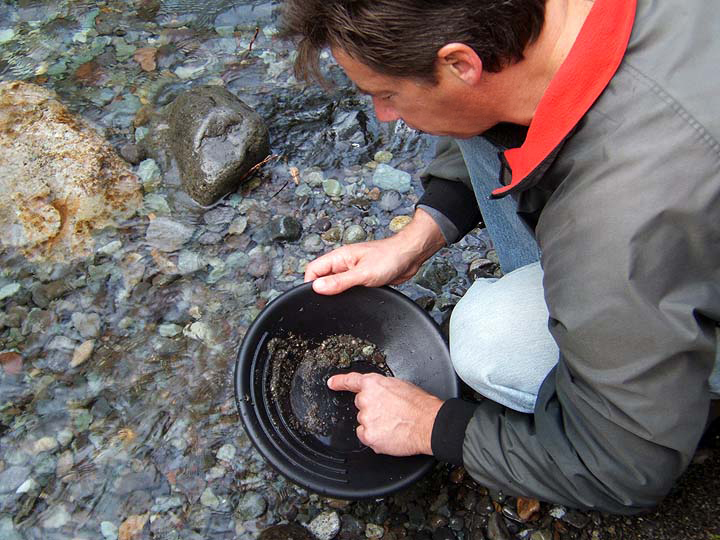
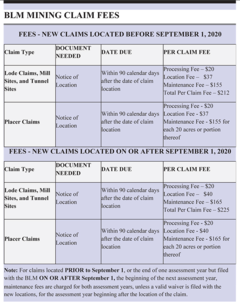 Mining claimants who wish to retain their mining claims on Bureau of Land Management and Forest Service lands through the 2021 assessment year must pay a maintenance fee or file a maintenance fee waiver certificate on or before September 1, 2020, to prevent the mining claim from being forfeited.
Mining claimants who wish to retain their mining claims on Bureau of Land Management and Forest Service lands through the 2021 assessment year must pay a maintenance fee or file a maintenance fee waiver certificate on or before September 1, 2020, to prevent the mining claim from being forfeited.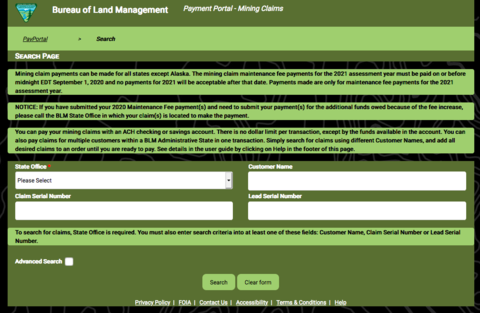



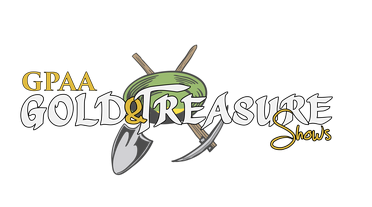 seminars, and 100 feet of gold panning troughs salted with real gold (keep all you find!), you won’t want to miss bringing the family to a weekend show sponsored by Gold Prospectors Association of Amercia. Eleven shows are to be held across the country in 2020.
seminars, and 100 feet of gold panning troughs salted with real gold (keep all you find!), you won’t want to miss bringing the family to a weekend show sponsored by Gold Prospectors Association of Amercia. Eleven shows are to be held across the country in 2020.